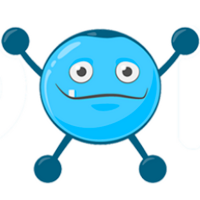Holy alliterative descriptor, Batman!
The Dynamic Duo will always be Batman and Robin for some. They fight crime. They wear tights. They drive some epically cool vehicles. They’re dynamic alright.
Dynamic segmentation, on the other hand, may not be as flashy as the Caped Crusader and his colourful sidekick, but it can be just as powerful. Nay! More powerful. It could take on the Joker, the Penguin, and Two-Face all at once…metaphorically speaking.
But what is it exactly, and why is it so crucial to your success in 2016? In the immortal words of Bette Davis:
“Fasten your seat belts, it’s going to be a bumpy night.”
Or morning, or mid-afternoon. Whenever you’re reading this, really. And it won’t be so much bumpy as informative and helpful…but “it’s going to be an informative and helpful night” just doesn’t have the same ring.
Email Marketing and You
Breaking It Down
To segment, or not to segment? That is the question. The answer: you MUST segment. You need it to squeeze top results from your marketing efforts. Why? You wouldn’t market your hair gel to bald people, or your meat-of-the-month service to vegetarians, or your animal-powered debris removal system (Pet Sweep…and it’s a real thing) to someone without a pet. It’d be a waste of your time and money, and their time and patience. No one wins in that scenario.
Customers are not all the same – different wants, needs, and desires. They’re at different phases of the buyer’s journey (awareness-consideration-decision). And they want personalized attention and content. You can’t treat them all the same and expect to succeed. They need to be segmented and grouped. Birds of a feather.
A List is a List?
Read anything on starting a business, having a business, or growing a business, and you’ll see the suggestion to build your email list as soon as possible over and over again. It’s such ubiquitous advice that it’s almost a cliché.
“If you’re not building an email list, you’re an idiot.” ~Derek Halpern
Harsh words, but the sentiment is true (although I would have said it in a nicer way).
But having a big list is not the asset that it once was. You can have thousands of names and contact details, but unless you’re sending the right message at the right time to the right individual, it’s meaningless. You’ll end up either ignored, deleted, or relegated to the spam folder (where businesses go to die).
Email: The Early Years
In the beginning, you received dozens of useless email messages. You got more unsolicited email than actual letters from friends and colleagues. But it was new, and innovative, and trendy, so we put up with it. After all, what’s a bit of irritation compared to instant and worldwide communication?
Then we got smarter. And email got smarter. Early providers (remember Hotmail?) introduced spam filters to help us out. Fewer worthless messages got through to our inbox. But that didn’t stop unscrupulous email marketers from trying. It was a numbers game: send out tens or hundreds of thousands of emails to the biggest list you could get your hands on and hope for just a few to take the bait. It worked. For a while.
If you’re still doing that today, you’re failing at, well, everything.
Your Email Experience
Think about your own email usage. How many emails do you receive each day? An office worker gets an average of 121. Crikey. How many of those do you actually open? That depends. Most of us try to be strict about it, and we don’t often open something from an unknown source on those rare instances that they make it past our spam filter. That is, unless the subject line catches our eye or speaks to us in some way.
For email to be most effective, you need to be known (or at least introduced), and you need to send something relevant. You need people to willingly give you their contact details in order to grow your list. Email lists generated this was come in two flavours.
Vanilla – Static Lists
Let’s pretend you have an email list of 1000 names and addresses that you collected from your website. These people signed up for your monthly newsletter. They voluntarily provided their details because they liked what they saw. Nothing wrong with that. The list is yours. You have names. You have addresses.
This is a static list. It won’t change. It contains only what you collected – names and addresses – when it was created. Static lists do have their place in the world – newsletter subscribers, participants at an event or conference, employees, or individuals that downloaded some incentive. You can use it, but over time they tend to shrink as people lose interest. Over 90% of email users have unsubscribed from a list they previously subscribed to. These lists are vanilla – good enough sometimes, but still kind of bland and unspectacular.
Rocky Road – Segmented Lists
On the flip-side are segmented lists. These are separated into specific and precise categories. They can change and evolve by using data collected somehow (more on that in a moment) to update individual wants and needs. You don’t just have one big list…you might have two, or three, or ten smaller but more differentiated lists. Which is more useful: the same message to 1000 people, or five targeted messages to five smaller groups of 200? Segmented lists are the Rocky Road (or Moosetracks, or Neapolitan, or whatever flavour floats your boat) of the email marketing world.
You can segment an email list based on almost anything: dropdown menu selection, surveys, opt-ins, CTAs, customer or lead, and email behaviour like did not open, opened, clicked, purchased, or signed up.
Segmentation might include several categories:
- Demographics (gender, age, location, profession, income)
- Preferences (likes and dislikes)
- Behaviour (order/purchase history, email opens/clicks, app usage, etc)
- Psychographics (values and beliefs, deduced by behaviour)
These lists are much more targeted, based on some defining characteristic. A Beginner’s Guide to Email List Segmentation could be an entire blog post unto itself. It’s a big topic with a lot to take in.
The Art of Segmentation
But how to do it? Segmentation falls into one of two broad categories: traditional, and dynamic. One guess as to which is better for you and your business.
1. Traditional Segmentation
Traditional segmentation involves collecting additional information in some way. It might utilize a dropdown menu to allow leads to self-select their particular demographic, or several entry fields for them to type in their specifics.
But – and this is important – the more you ask for, the less likely you’ll get it. The typical web browser is looking for instant gratification…not lengthy forms. Quick, easy, painless: name and email address. Ask for more than that, and your conversion numbers will suffer:
- Surfers read only about 28% of the words on a webpage of roughly 593 words.
- Cut the words to 111 or less, and that number nearly doubles to 49% of the words.
- 17% of page views last less than 4 seconds, and only 4% last more than 10 minutes…so be quick!
Some people just – gasp! – leave it blank, or at the default value, giving you an incorrect assessment of who they are. This method requires leads willing to take the time to answer your questions fully and completely, and that’s often a tall order. Easy for you, yes, but wildly inaccurate and inconsistent.
A second method uses varying CTAs, with leads added to a particular group depending on which one they used to sign up or click. This requires a lot of up-front work from you – the creation of multiple landing pages and CTA links – and is more difficult to maintain and manage. And for all your hard work, it still isn’t necessarily very accurate. Prospects may have visited several pages before deciding to sign up. They may fall into more than one category, or they may have simply clicked on whatever CTA was on the page when they decided to move forward…regardless of whether it actually applies to them. That’s a lot of exhausting effort for very little payoff.
The worst part? Neither method is anything other than an ultimately static list. Better than an email blast campaign with just names, but it won’t change. If someone signs up as a beginner, for example, then a beginner they will remain. Forever.
2. Dynamic Segmentation
And now we get to the ideal. The goal. Your email marketing holy grail. Dynamic segmentation is automatic, unintrusive, and fluid. It changes over time. It ebbs and flows like a good ocean current. It collects, analyzes, and applies data based on website activity (pages visited, read time, repeat visits, repeat looks at products without buying…), app activity, form data, email activity (open, click, convert), surveys (better referred to as “quizzes” and such), and sending frequency (leads select daily, weekly, monthly) among many others.
Lists created with dynamic segmentation can be used for marketing purposes, lead nurturing, and retention. And it requires no extra input from your prospects or customers, adapting with them over time as their behaviour and interests change. In email marketing, relevancy is key, and dynamic segmentation puts relevancy on autopilot.
Putting It Together
Why Segmenting Matters
In a word? Email marketing (okay, that’s two words…but still less than, say, three). Is it dead? Hardly. The debate may rage online (It’s dead! It’s alive! It’s dying! It lives!), but there are over 250 email marketing solution providers out there, so maybe they know something the rest of us don’t.
And most marketers still recognize its value and efficiency. 41% of them lean on email data above all other sources, 54% believe it the most effective digital marketing channel, and 89% list email as best for lead generation.
Okay, so providers build businesses around it, and marketers like it, too. Big whoop. But what about the customer, the people receiving the “spam” and holding their dollars close to their chest? Well, almost two-thirds of consumers like receiving weekly promotional emails from trusted brands…and close to 30% would like them even more frequently! And lest you think social media is the preferred route these days, only 17% of people prefer getting promotional material via social platforms compared to 72% who prefer it to arrive via email. Home run email!
A healthy and competitive arena? Check. Fans in the marketing community? Check. And appreciated by the general public? Check. 3-for-3…that’s a great day at the ballpark and the office.
A visitor arriving via email marketing is almost twice as likely to buy something as someone coming from the search engines, and over 7x more likely than social media. And email has achieved nearly universal usage online:
- Well over 90% of online adults use email
- There were an estimated 4.1 billion email users in 2015, and that number is growing, not dying. Email is not dead. It’s not even sick!
- 91% of consumers check their email at least once per day on their mobile phone
- Email marketing returned an average of $44.25 for every $1 spent in 2014, and a 4300% return-on-investment (ROI) in the U.S.
- Email is 40x more effective at acquiring customers than Facebook and Twitter (take that, Mark Zuckerberg and your 276 kajillion dollars!)
You can’t be sitting on the fence when it comes to email marketing. You have to jump over that fence in a single bound. Plant your flag. Stake your claim. Why anyone would declare email marketing dead is a mystery when you look at the numbers. It just doesn’t make sense…kind of like the popularity of Duck Dynasty.
But you have to segment your lists. Broadcast or blast campaigns – sending out the same message to everyone regardless of relevancy – just don’t work. At all. In fact, they usually have the opposite effect and will get you blocked, blacklisted, or unsubscribed from faster than you can say otorhinolaryngologist.
Still not convinced? Feast your eyes on these too-good-to-be-true-but-still-true stats: segmented and targeted emails account for 58% of all revenue, with a 760% increase in that revenue with segmented campaigns. According to Lyris, 39% of marketers who segment their email lists experience higher open rates, 28% experience lower unsubscribe rates, 24% experience greater revenue, 15% have lower spam complaints, and 14% saw better word-of-mouth. Whatchoo talkin’ ‘bout, Willis?
The numbers seem silly, don’t they? Whenever anyone starts talking about a “760% increase” of this or a “4300% return-on-investment” on that, most of us will smile, nod knowingly, and dismiss it as malarkey.
But it’s true. It’s all about relevancy and personalization. Like Pavlov’s dog, you can eventually condition your contacts to automatically open your emails if you only send them personalized, relevant, useful stuff. But – like bodybuilding or speaking a second language – you can lose it all in a fraction of the time it spent to build up. Send a couple irrelevant or “blast” emails, and those same contacts are likely to bolt like a frightened rabbit.
Pavlov’s dog = good. Scared bunny = bad. You need dynamic segmentation like a Kardashian needs media attention.
Good for the Goose, Good for the Gander
You could try and find valid reasons to NOT segment your lists, but they really don’t exist. Traditional segmentation takes more time and energy, but it does perform better than non-segmented campaigns. Dynamic segmentation does all that and more without the extra time and energy from you or your leads and customers. So is it worth it (that’s a rhetorical question)?
- Your subscribers get fewer overall emails (eliminating digital junk from their inbox), lower unsubscribe rates because the emails are useful and relevant, and each message reflects their phase of the buyer’s journey.
- You give leads at each stage exactly what they need, don’t annoy buyers with emails pushing them to buy, and provide fantastic post-purchase follow-up for better retention and satisfaction. You meet and exceed their requirements on every level, in every phase. And that makes for happy, repeat customers.
A Dynamic Recipe
A dynamic segmentation solution should look at any combination of:
- How and for what did they opt in?
- What about your product or service appeals to them?
- What specific product/service are they interested in (could be based on page views, survey, opt in, etc)?
- Level of interest
- Email history (open, click-through, convert)
- Purchase history
- Where are they in the buyer’s journey?
That last one could make or break you. Push too hard in the awareness phase, and you may scare them off. Forget about them in the purchase phase, and they’ll likely feel ignored and unappreciated. You need your email list to reflect their current stage so you can connect and communicate the right message.
- Awareness – make finding and getting information about you and your business easy-peasy (SEO, blogs, and other content). These are your new visitors, your new subscribers. Your emails should provide a welcome, invitation to follow or like social media profiles, and access to plenty of research materials (blog posts, infographics, videos). They’re looking for information.
- Consideration – emails should include links and access to content that helps them consider and compare (case studies, white papers, blog posts, testimonials). BUT…it needs to address their specific needs, wants, and problems. Send an email about Product A when they’re interested in Product B, and you’re toast. Dynamic segmentation, baby! Explain clearly how your product addresses their specific requirements and how you’re better than the competition.
- Decision/Purchase – emails could offer a quick consultation, call, free trial, or coupon to reel in those leads teetering on the edge. Get them to the tipping point. New customers should receive a welcome/thanks note immediately after purchase. Include tips and tricks to enhance their experience. Don’t forget to follow-up. If they haven’t already, get them to sign up for a newsletter to stay abreast of changes, updates, new products, and other useful info based on their dynamic contact details.
- Advocacy – Ask for referrals, testimonials, and feedback from established customers. Ask how you can continue to help them.
Sounds like a lot of work, right? It is. But lucky you, as dynamic segmentation solutions do it all for you behind the scenes. Keep your contacts on the right list. Speaking of which…
Provider Profile: Spokal’s Focuses Feature Feature
Try saying that three times fast. Spokal works with your WordPress blog, driving more traffic to your site, converting more people to your list, and driving more sales. And yes, it offers a nifty dynamic segmentation feature called Focuses.
Spokal’s own Chris Mack teaches you everything you need to know to get started in a short video. Watch, learn, segment.
The Cliff Notes version? Focuses uses website visitor behaviour to skillfully segment them for email campaigns and lead nurturing. It allows you to attach a primary and secondary focus directly from the editor. Any form or CTA on that post will automatically add them to the appropriate segmented email list. You’ll see explicitly what they’re interested in, and what they signed up for. Under “Contacts” in your account, you’ll see a breakdown of the various focuses they’ve visited, and this graph is updated and refined in real-time the more they visit and browse your site. You’ll always have their current interests at your fingertips.
With that, you can target with laser-precision. Notice that a lead has visited your Product A page five times in the past few days without buying? Send a quick email highlighting the benefits and offering a free trial or coupon. Customer purchased three vegan supplements from you in the past month? Introduce them to your new line of vegan snacks.
These updated and fluid contact lists can be used in automated email campaigns via Active Campaign (and their tags feature) or MailChimp (custom properties). Keeping on top of your lead and customer focuses is crucial so they’re not receiving irrelevant emails (and therefore may unsubscribe and stop visiting) once an issue is addressed or an interest switches. Stay relevant, stay on topic.
- 81% of online American shoppers are likely to make another purchase from an email based on their previous behaviour and preferences (thank you, dynamic segmentation!)
- Personalized promotional emails boast 29% higher open rates and 41% higher click rates than non-personalized offerings
- Open rates are 39% higher for segmented email lists, with 28% fewer unsubscriptions
- Using email to nurture leads creates up to 50% more sales-ready leads, and triggered emails generate 119% higher click-throughs
So will the real dynamic duo please stand up? No, not you, Batman. Get back to the Batcave. This title belongs to dynamic segmentation and email marketing exclusively. Powie! Thwack!
Take it for a spin. Spokal’s Focuses can make dynamic segmentation as easy as taking candy from a baby (Editor’s note – we do not endorse stealing candy from babies). Start your free 14 day trial immediately…and never bother a snake with your gloves promotion again (see what I did there?).










